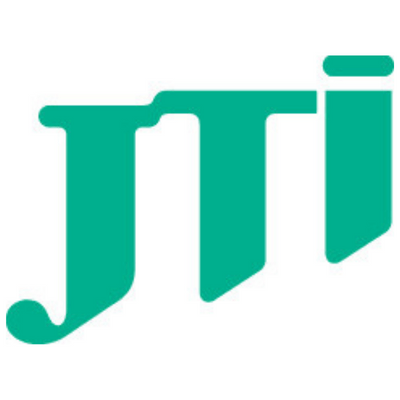As we reach the midpoint of 2023, it’s time to assess the significant trends and transitions that have been shaping key industries in Cambodia. From the rapidly evolving banking sector, grappling with digital transformations, to the complexities of illicit trade in the alcohol industry; from the optimistic outlook in the tourism sector, despite persisting challenges, to the transformative changes in human resources, agricultural and education sectors – it’s clear that 2023 has been a year of considerable action.
The International Business Chamber of Cambodia’s mid-year review provides an insightful analysis into these diverse realms, capturing the views of top industry leaders, their challenges, strategies, and their outlook for the rest of the year.

Harnessing Digital Transformation: Credit Growth and Arrears in the Banking Sector
In the rapidly evolving world of finance and banking, a number of significant trends are emerging, according to Sothearoath Oeur, CEO of Credit Bureau (Cambodia). “We are forecasting that the credit growth will continue at a pace under 10% by the end of 2023,” he shares. While credit quality has seen a leap. “There has been a jump in credit quality (30+ days overdue) to 4.84%, significantly higher than the initial projection of 3% in January,” Sothearoath observes.
The digital transformation in the banking sector has led to a more seamless customer journey, especially when it comes to cross-border transactions. As Sothearoath explains, “This transformation has been particularly effective in cross-border transactions, with advancements in both cross-border payment methods and cross-border credit reporting sharing systems.” Moreover, the introduction of new products and services, like the hybrid Buy Now, Pay Later service and a new invoice financing system, underlines the continuous commitment to customer-centric innovation. “This demonstrates our continuous endeavor to provide more financial options to our customers,” the CEO emphasizes.
Despite these changes, the demand for credit has remained steady. Sothearoath notes that “even with these changes, the demand for credit has remained stable.” The number of loan accounts has seen a small but noticeable increase. “In fact, we have noticed an uptick in the number of loan accounts, which has increased by 2.2%,” he states. This has been mirrored by a growth in the outstanding loan balance, which has risen by 1.87%.
The CEO points out the impressive figure for new loan disbursement, which stands at $8.8 billion in the market. “We have observed a total new loan disbursement of $8.8 billion in the market,” he reports. Lastly, Sothearoath notes a decrease in the quality of loans, evidenced by the increase in 30+ days past due (DPD) to 4.84%. “There has been an apparent decrease in loan quality, as observed in the increase to 4.84% in 30+ days past due (DPD),” he concludes.
Battling Illicit Trade: The Drive for Regulatory Changes in the Alcohol Industry
Chhay Tan, CEO of Attwood Import Exports, recently shared some updates on the state of the alcohol industry. He began by highlighting the persistent problem of illicit trade, which has continued to trouble the sector despite the global health crisis being largely under control. “Illicit trade remains a major concern in our sector. This issue is leading to significant tax revenue losses for the Royal Government, and posing serious health risks to consumers,” he warned.
As part of the Wine Spirits Beer Importer Distributor Association (WSBIDA), the company is taking active steps to combat this issue. Chhay mentioned, “We have been actively participating in various meetings, workshops, and training sessions with organizations such as EuroCham, CCF, APISWA, S&O, and government officers.” A key focus in these efforts is the crackdown on smuggled products.
A new initiative is the drafting of a Sub-Degree on the Legal Purchasing Age (LPA), led by the Director General of the CCF. Chhay explained, “We are currently working on the draft of a Sub-Degree on the Legal Purchasing Age (LPA). We propose setting the LPA at 18 years.”
Chhay is optimistic about the potential growth of the alcohol industry following these enforcement measures. “The Alcohol industry is expected to see growth after the government’s enforcement against illicit trade, counterfeit, smuggling, and the overall positive signs in Cambodia’s economic status. This would ideally lead to an increase in government tax collection,” he predicted.
The CEO also foresees benefits to consumer education and health. “Upon enforcement of the LPA, we anticipate an improvement in consumer knowledge regarding responsible consumption. Regulations on importers and distributors in the Alcohol industry will ensure a fair playing field and protect the health of consumers,” he stated.
In the fight against illicit alcohol trade, the WSBIDA has sought government support, raising the issue with the Private Sector Working Group D (PSWG-D). “PSWG-D is fully aware of the issue and plans to submit it to the MoEF’s minister. We have also committed to continue working closely with competent authorities to minimize smuggled products and thereby increase tax revenue,” Chhay affirmed. The LPA Sub-Degree will be led by H.E Phan Oun from CCF under the Ministry of Commerce.
Bouncing Back: Prospects and Challenges in Cambodia’s Tourism Sector
According to Daniel Simon, the Managing Director of Rosewood Hotel Phnom Penh, the tourism sector has seen several noteworthy changes since the start of the year. He admits that while some issues persist, there are reasons for optimism. “While flight connectivity remains a challenge, there are bright spots worth noting. For instance, the SEA Games, though they didn’t bring in as many international tourists as anticipated, were still well-received,” Daniel states.
He also notes positive developments from the Ministry of Tourism, which is taking the initiative to boost the sector. Daniel explains, “There’s been progressive work from the Ministry of Tourism in areas like Eco tourism and the initiation of the ‘Wonder Campaign’. They’ve also embarked on ASEAN marketing campaigns encouraging local travel, and have seen the creation of a Convention Bureau under the Meetings, Incentives, Conferences and Exhibitions (MICE) initiative.”
Daniel underscores the beneficial role of brand collaboration in the tourism industry. “Furthermore, we’ve observed promising cross-collaboration between brands and are keen on positioning Phnom Penh as a go-to weekend destination,” he asserts. He then breaks down the current tourist arrivals: “In terms of visitor arrivals, Thailand and Vietnam account for 51% of all tourists, China stands at 10%, and the U.S. contributes 3.8%.”
Despite the optimistic outlook, Daniel acknowledges the current challenges as reflected in the visitor numbers. “From January to April, we saw 1.6 million passengers across all three airports, which is considerably lower than the 4.2 million reported in the same period of 2019. When we look at Phnom Penh airport alone, the numbers also indicate a dip with 1.3 million passengers compared to 2.1 million in 2019,” he reports.
Nonetheless, he remains hopeful about the prospects for tourism. He concludes, “Despite the challenges, we continue to see potential opportunities in the tourism industry and remain optimistic about the future.”
Bridging Skill Gaps: Innovations in Human Resources and Vocational Training
Kevin Britten, Managing Director of Top Recruitment, has observed several critical changes in the Human Resources (HR) sector since the start of the year. A significant development has been the Draft Law on Technical & Vocational Education & Training. “Currently, the spotlight is on the Draft Law on Technical & Vocational Education & Training. This proposed legislation introduces a two-part system, Secondary and Higher, and three types of training – Formal, Non-Formal, and Informal, encompassing eight levels up to the doctorate level,” Kevin explains.
The primary objective of this new approach is to bridge skill gaps and align training more closely with industry requirements. “The primary goal of this approach is to address skill gaps and meet the actual requirements of various industries. This innovative system will be characterized by competency-based assessment, certification, and professional standards designed to align with the needs of various sectors,” he adds.
Kevin also points out that there is great opportunities for the service sector offering international standard services, which he sees as a key tool for solving pressing issues. – He explains, ” For example, my company focuses on providing international standard services that facilitate collaboration between Cambodian and foreign professionals to solve pressing issues.”
Speaking about the recruitment market, Kevin notes that there has been little change from the first quarter of the year. He identifies the sectors where demand is highest, saying, “The hottest sectors currently include property developers, IT services, education, and medical & pharmaceuticals, where we are observing a significant demand for talent.”
Despite the challenges in the sector, Britten remains optimistic about the future. He concludes, “Regardless of the fluctuations in the sector, we remain optimistic about the opportunities ahead and are eager to foster a competent and globally competitive workforce.”
Sowing Seeds of Innovation: Infrastructure and Tech Advancements in the Agricultural Sector
Parth Borkotoky, the founder of Azaylla, shed light on several developments in the agriculture sector since their January presentation. “The focus has been on value-added processing, specifically on crops like rice and cashew for export, and aquaculture, livestock, and feed for domestic purposes,” Parth explained. Operational and capital inputs have seen a significant increase, especially in terms of seeds, fertilizers, pesticides, and mechanization and automation.
Infrastructure remains a critical factor, particularly logistics for transport, storage, and irrigation. “Infrastructure remains a vital component, with logistics playing a crucial role in transport, storage, and irrigation schemes,” Parth noted. He also pointed out that there is substantial focus on ICT in terms of intangible and movable finance. “In terms of finance, there’s a considerable focus on intangible and movable finance in Information Communication Technology (ICT),” he said.
Foreign investment and procurement are now playing a major role in the rice industry, and the feed sector is driven mainly by the livestock and aquaculture sectors. Parth acknowledged the companies making headway in these areas, “As for feed, it’s largely driven by livestock and aquaculture sectors, with companies like De Heus leading the way. Livestock is dominated by cattle and dairy, with firms like KDF making their mark.”
Public-private partnerships for irrigation projects are being nurtured with the Ministry of Economy and Finance (MoEF) and Ministry of Water Resources and Meteorology (MOWRAM). “On the irrigation front, public-private partnerships with the Ministry of Economy and Finance (MoEF) and Ministry of Water Resources and Meteorology (MOWRAM) are being fostered,” Parth said. He also highlighted the role of logistics and temperature controlled storage facilities, where companies like KCC and Amru are leading and in addition to that he also mentioned about agricultural industrial parks development initiative through Australian Government support.
Furthermore “The Royal Government of Cambodia (RGC) is focusing on promoting inclusive growth, import substitution, and exploring global markets which is key to create further growth in to the sector,” Parth concluded.
Elevating Learning: Progress and Potential in Cambodia’s Education Landscape
Trevor Sworn, Director of Enduring Consultancy, reflected on significant changes in the education sector since the January presentation. He acknowledged the impact of global stresses and the persistent skills gaps in the workforce. Trevor emphasized the need for private sector investment in training and upskilling initiatives, stating, “This has underlined the need for private sector investment in training and upskilling initiatives.” He also noted an upward push on wages for jobs in high demand and the upcoming launch of the Institute of Directors in 2023/4.
Examining macro demographics, Trevor highlighted the increasing urbanization trend, with over 26% of the population now residing in urban areas, of which 64% are aged between 20-34 years old. He further pointed out that a significant portion (31%) of the population is under the age of 14, and this demographic is projected to grow until 2044.
Turning to the state of public schools, Trevor mentioned the challenges associated with a lack of essential resources and the high dropout rate, with over half of students leaving school by the age of 17. On the other hand, he observed the expansion of private schools like ACE, as well as new entrants such as Kings and Shrewsbury.
Efforts to enhance the quality of education, particularly at the tertiary level, are underway. Sworn emphasized the pressing need for employment-centered skills training to bridge the gap between education and the demands of the job market. “There’s a pressing need for employment-centered skills training to bridge the gap between education and the demands of the job market,” he stated.
The government continues to prioritize human resource development policies, and the rising middle class is demonstrating a strong willingness to invest in education. Trevor highlighted the growing demand for languages and digital skills literacy, which underscores the importance of incorporating work-based learning and internships into vocational and tertiary education.
As the economy diversifies, there is a need for a wide range of skills. Trevor identified growth in retail and services, as well as emerging opportunities in agriculture and horticulture. He emphasized the necessity for an adaptable education system that can respond to market dynamics, stating, “These shifts call for an adaptable education system that is responsive to market dynamics.”
In conclusion, Trevor remarked on the fascinating insights provided by the Industry Mid-Year Review 2023, highlighting the collective commitment to fostering growth, innovation, and sustainability across various sectors. He expressed confidence in Cambodia’s economic outlook for the rest of the year and beyond, stating, “Bolstering Cambodia’s economic outlook for the remainder of the year and beyond.”
As we approach the second half of 2023, the insights shared by these industry leaders reveal both the challenges and opportunities in Cambodia’s key sectors. Despite the complexities and uncertainties brought by global trends and local pressures, there is a tangible sense of optimism and resilience. With the combined efforts of these industries and a continued emphasis on innovation, improved regulations, and infrastructural development, the future of Cambodia’s economy looks promising.
The International Business Chamber of Cambodia (IBC), established in 1995, is an independent and non-political entity that promotes business opportunities within Cambodia and the ASEAN region. Through its numerous events and initiatives, the IBC facilitates dialogue and networking among businesses, professionals, and government entities, while advocating for a more competitive Cambodian business environment to stimulate further investment.








